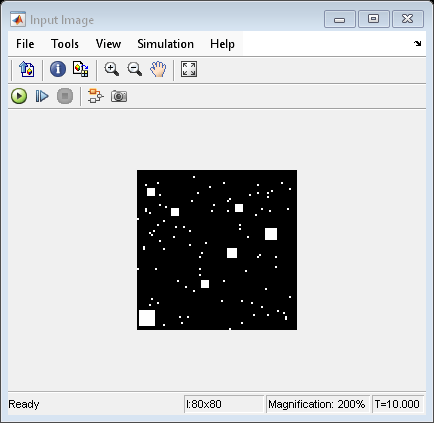Top-hat
Perform morphological top-hat filtering on intensity or binary images
Libraries:
Computer Vision Toolbox /
Morphological Operations
Description
The Top-hat block performs top-hat filtering on an intensity or binary image using a predefined neighborhood or structuring element. Top-hat filtering is the equivalent of subtracting the result of performing a morphological opening operation on the input image from the input image itself.
To define the structuring element that the block applies to the image, use the
Neighborhood or structuring element parameter. Specify this element by
entering a vector or matrix of 1s and 0s or by using the
strel function.
This block uses two-dimensional flat structuring elements only.
Examples
Ports
Input
Output
Parameters
Block Characteristics
Data Types |
|
Multidimensional Signals |
|
Variable-Size Signals |
|
More About
References
[1] Soille, Pierre. Morphological Image Analysis. Berlin, Heidelberg: Springer Berlin Heidelberg, 2004. https://doi.org/10.1007/978-3-662-05088-0.
Extended Capabilities
Version History
Introduced before R2006a

